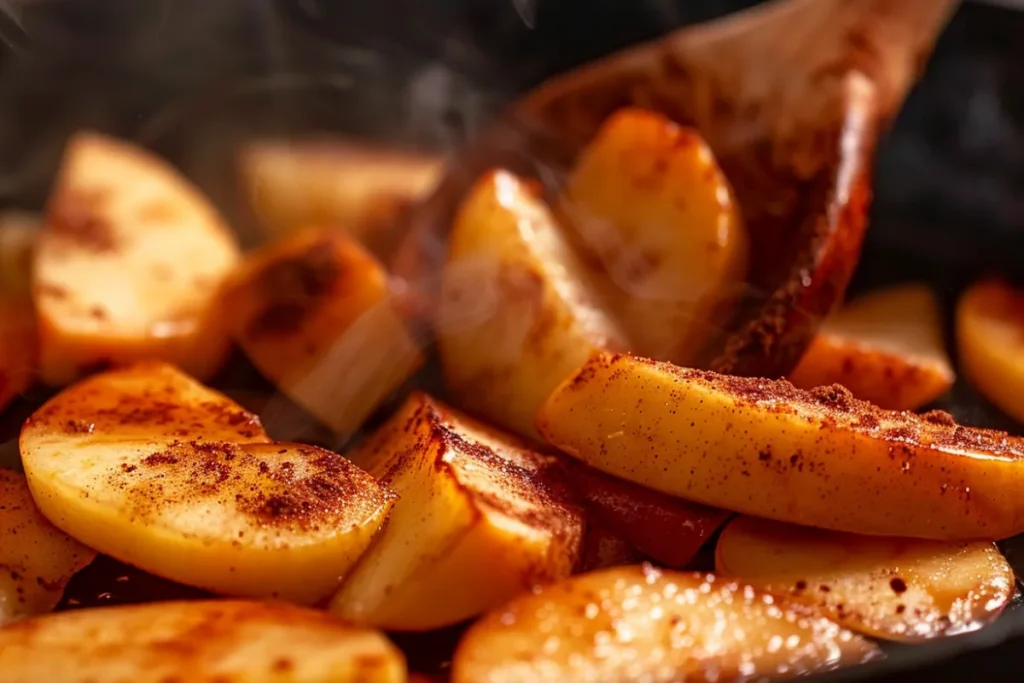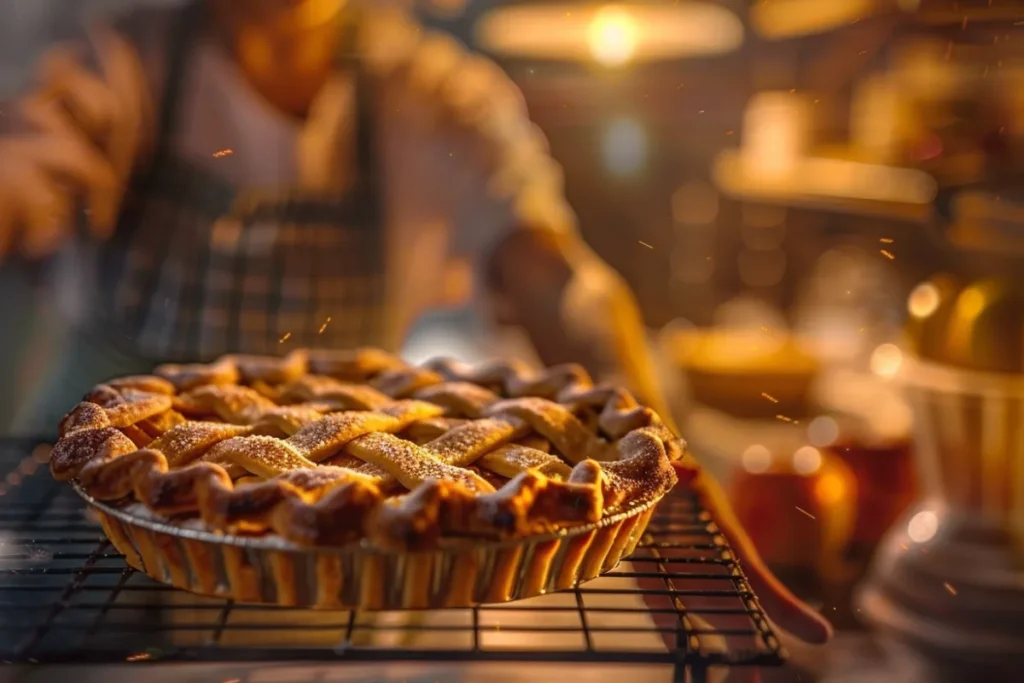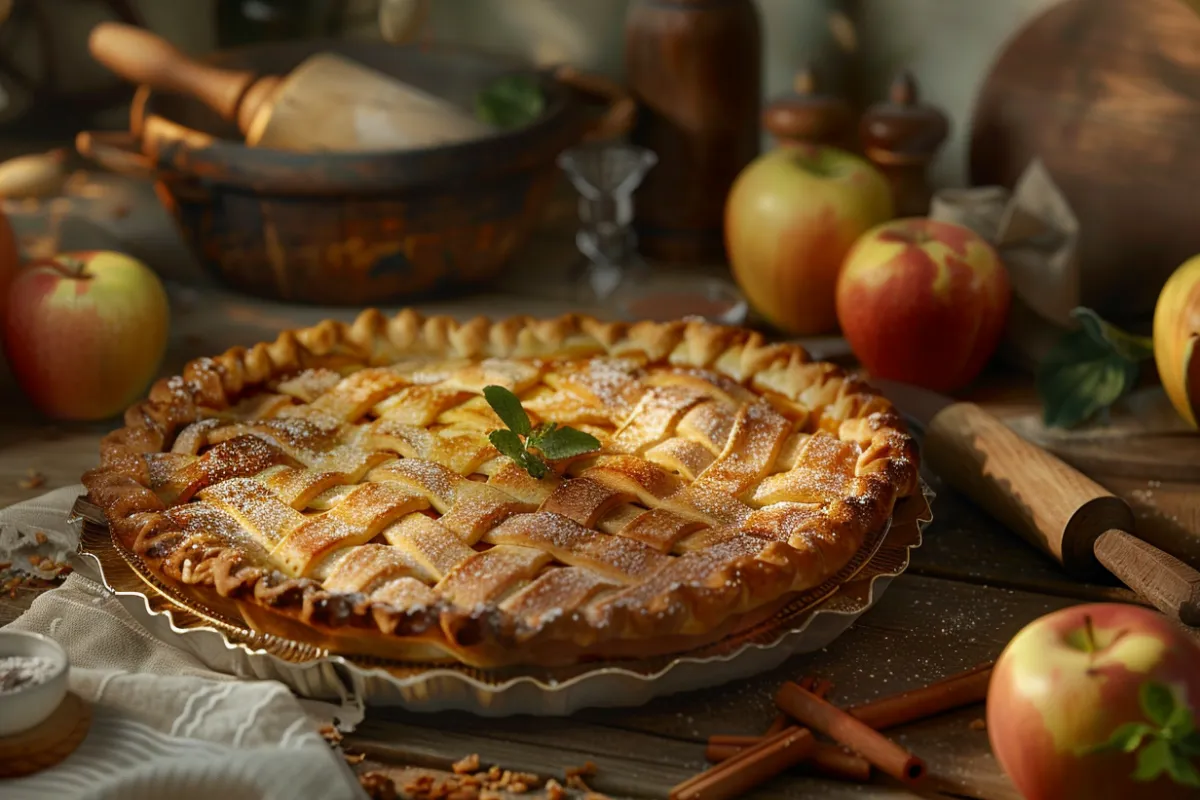Apple pie is an all-time classic, but even the best recipes leave room for improvement. Whether you’re a seasoned baker or just starting, small tweaks can make a world of difference. This article dives into practical tips and tricks on how to improve an apple pie for better taste and texture. From choosing the best apples to perfecting your crust, we’ll guide you step-by-step to create a dessert that’s nothing short of extraordinary. Let’s get baking!
Choosing the Best Apples for Optimal Flavor and Texture
Best Apple Varieties for Pies
Choosing the right apples is like setting the stage for a perfect play. Not all apples are created equal, and some are better suited for baking than others. Granny Smith apples are a favorite for their tartness, which balances the sweetness of the filling beautifully. If you’re looking for a sweeter option, Fuji or Honeycrisp apples fit the bill. Want complexity? Mix sweet apples with tart ones, such as combining Golden Delicious with Braeburn. This pairing creates layers of flavor that’ll leave everyone craving more.
Mixing Apple Types for Complexity
Why stick with just one apple variety when you can have the best of both worlds? Mixing different types of apples is a simple way to improve an apple pie for better taste and texture. For example, tart apples like Granny Smith hold their shape when baked, while sweeter apples like Jonagold or Pink Lady soften into a luscious filling. This contrast keeps every bite exciting and ensures your pie doesn’t fall flat.
Pro Tip
Always taste your apples before using them. Their flavor can vary depending on the season and origin. If the apples are too tart, a touch of sugar can balance them out, while a squeeze of lemon can perk up sweeter varieties.
Enhancing the Filling for Better Flavor

Spice Blends That Make a Difference
When it comes to flavor, spices are your best friend in how to improve an apple pie for better taste and texture. Traditional blends like cinnamon, nutmeg, and cloves are classic for a reason—they add warmth and depth to the filling. However, you can make your pie stand out by experimenting with less conventional options like cardamom or ginger. A pinch of allspice can also bring a unique twist. To make your filling irresistible, mix your spices with sugar or honey before combining them with the apples. This ensures even distribution and a burst of flavor in every bite.
For inspiration on homemade spice blends, visit this guide to crafting your own pie spices.
Using Fresh Ingredients Over Canned
There’s no denying the convenience of canned pie filling, but fresh ingredients are the secret to a truly mouthwatering pie. Freshly sliced apples retain a natural sweetness and a firmer texture, making your filling more satisfying. To bring out their natural flavor, toss the apples in lemon juice, sugar, and a pinch of salt before cooking. This step brightens the taste and prevents the filling from becoming too sweet or overly mushy.
Perfecting the Pie Crust for Texture and Taste
Butter, Lard, or Shortening: Which Works Best?
The debate over pie crust fat is as old as baking itself. Butter gives your crust a rich, buttery flavor, while lard creates an incredibly flaky texture. Shortening, on the other hand, is excellent for ease of use and consistency. If you’re after the best of all worlds, consider a combination of butter and shortening. This blend provides the perfect balance of flakiness and flavor, making it ideal for apple pie.
Making the Crust Flaky and Crisp
No one likes a soggy crust! To avoid this, blind-bake your bottom crust before adding the filling. Use pie weights or dried beans to keep the dough flat. Additionally, brushing the crust with an egg wash or a thin layer of melted butter before baking creates a barrier that prevents the filling’s moisture from seeping in. For an extra crispy finish, sprinkle the top crust with coarse sugar before popping the pie in the oven.
For more tips on pie crust perfection, check out how to avoid common pie dough mistakes.
Would you like me to proceed with the next part of the article or adjust these sections further?
Advanced Baking Techniques for Superior Results
Pre-Cooking the Filling
One of the best ways to improve both the flavor and texture of your apple pie is to pre-cook the filling. Raw apples release a lot of moisture during baking, which can make the crust soggy and the filling unevenly cooked. To fix this, sauté the apples with sugar, spices, and a bit of butter until they’re just softened. This step ensures the apples maintain their shape and reduces excess liquid, giving you a perfectly balanced filling.
For guidance on pre-cooking techniques, explore this detailed post on why pre-cooking apples makes a difference at Trek Recipes.
Using Baking Stones or Steel
Revised Paragraph:
A baking stone or steel is a game-changer for apple pies and an essential tip when learning how to improve an apple pie for better taste and texture. These tools help distribute heat evenly and ensure the bottom crust bakes beautifully. Preheat your baking stone or steel along with your oven, and place the pie directly on it for even cooking. This technique not only prevents sogginess but also creates a crisp, golden crust that perfectly complements the tender filling.
If you’re curious about other pie-making hacks, check out our complete pie-baking guide.
Creative Add-Ins and Flavor Boosters
Adding Citrus Zest or Extracts
Small additions can make a big difference in how to improve an apple pie for better taste and texture. Adding a pinch of citrus zest—like lemon, orange, or even lime—brightens the flavors and balances the sweetness of the filling. For an extra depth of flavor, try incorporating a splash of vanilla or almond extract. These subtle enhancements elevate the filling and make it stand out without overpowering the natural apple goodness.
Incorporating Nuts or Caramel Layers
For added texture and flavor, consider layering the filling with crushed nuts like pecans or walnuts. These add a delightful crunch that contrasts beautifully with the soft filling. To truly embrace how to improve an apple pie for better taste and texture, another indulgent option is to drizzle caramel sauce over the apple mixture before placing the top crust. As the pie bakes, the caramel melts into the apples, creating a luscious, gooey texture.
Let me know if you’d like to continue with the next sections or revise these parts further!
Common Pie-Making Mistakes to Avoid
Overmixing the Dough
When making pie crust, it’s easy to get carried away, but overmixing the dough is a common mistake that can ruin the texture. Too much mixing activates the gluten in the flour, leading to a tough and chewy crust rather than a flaky one. To truly master how to improve an apple pie for better taste and texture, mix the dough just until it holds together, and let it rest in the fridge before rolling it out. This step is key to how to improve an apple pie for better taste and texture because it ensures the butter stays cold, which is essential for a light, flaky crust.
Skipping Ventilation in How to Improve an Apple Pie for Better Taste and Texture
Another pitfall to watch out for when considering how to improve an apple pie for better taste and texture is forgetting to add vents to the top crust. These small slits are more than decorative; they allow steam to escape during baking. Without proper ventilation, steam builds up inside the pie, causing the crust to become soggy or even burst. Take a few extra seconds to create an attractive lattice or use a sharp knife to make slits in the top crust for a pie that bakes evenly and looks beautiful.
Remember, the key to how to improve an apple pie for better taste and texture often lies in mastering these small details.
FAQs About Apple Pie
What Enhances the Flavor of Apples?
Adding complementary flavors like cinnamon, nutmeg, or a splash of citrus zest can enhance the natural sweetness of apples. If you’re wondering how to improve an apple pie for better taste and texture, a sprinkle of brown sugar can do wonders as it caramelizes during baking, giving the filling a richer, more indulgent flavor.
How Do You Make a Pie Taste Better?
To make your pie taste better and truly understand how to improve an apple pie for better taste and texture, use a mix of apple varieties, pre-cook the filling, and experiment with spices or extracts. A high-quality crust and creative add-ins like nuts or caramel can also elevate your pie.
Why Does McDonald’s Apple Pie Taste So Good?
McDonald’s apple pie owes its unique taste to its spice blend and a buttery crust. To understand how to improve an apple pie for better taste and texture, you can learn from their approach of using a partially pre-cooked filling, which ensures a consistent texture and flavor.
Is Cornstarch or Flour Better for Thickening Apple Pie?
How to improve an apple pie for better taste and texture often depends on the right thickener. Cornstarch is better for a clear, glossy filling, while flour creates a denser texture. Choose based on your desired outcome, but always measure carefully to avoid lumps or an overly thick filling.
For more dessert tips and tricks, explore the dessert recipe collection.
Final Touches and Serving Suggestions

Glazing the Top for a Golden Finish to Improve Apple Pie Taste and Texture
A beautifully baked pie isn’t just about flavor—it’s about presentation too. How to improve an apple pie for better taste and texture begins with thoughtful finishing touches. Start by brushing the top with an egg wash before baking to achieve a golden, glossy crust. Mix one egg with a tablespoon of milk or water, then apply it evenly with a pastry brush. If you’re still considering how to improve an apple pie for better taste and texture, sprinkle coarse sugar over the egg wash for a subtle crunch and added visual appeal. These small steps not only make your pie look irresistible but also enhance its texture.
Pairing Apple Pie with Sides
No apple pie experience is complete without the perfect accompaniments. When considering how to improve an apple pie for better taste and texture, a scoop of vanilla ice cream is a timeless classic that pairs beautifully with the warm, spiced filling. For a lighter option, try a dollop of whipped cream with a hint of cinnamon. If you’re feeling adventurous, serve your pie with a drizzle of caramel sauce or a sprinkle of toasted nuts for an extra layer of indulgence.
When considering how to improve an apple pie for better taste and texture, these small details can make all the difference in creating a truly memorable dessert.
Bringing It All Together: How to Improve an Apple Pie for Better Taste and Texture
Why These Tips Matter
When it comes to crafting the perfect apple pie, every step—no matter how small—plays a crucial role. From selecting the right apples to adding the final glaze, each element contributes to the pie’s overall taste and texture. By following this guide on how to improve an apple pie for better taste and texture, you’ll transform your pie from good to extraordinary.
Your Next Apple Pie Adventure
Now that you’ve mastered how to improve an apple pie for better taste and texture, it’s time to put these tips into action. Experiment with new flavor combinations, refine your crust-making skills, and don’t be afraid to get creative. With each pie you bake, you’ll gain confidence and discover new ways to make this classic dessert uniquely your own.
For more inspiration and recipe ideas, check out this collection of dessert recipes.
Nutritional Information
Nutritional Content (Per 100g)
Below is the nutritional content of a standard apple pie per 100g serving:
| Nutrient | Amount (per 100g) |
|---|---|
| Calories | 237 kcal |
| Carbohydrates | 34 g |
| Protein | 2 g |
| Fat | 10 g |
| Fiber | 1.5 g |
| Sugar | 16 g |
| Sodium | 200 mg |
| Cholesterol | 5 mg |
Notes:
- Nutritional values may vary slightly depending on the recipe and ingredients used.
- Always consider ingredient modifications for dietary needs or preferences.

